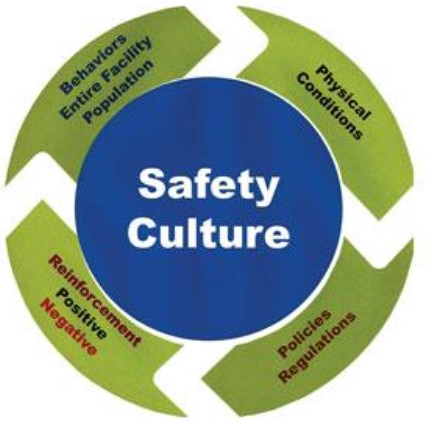Cultivating a Behavior-Based Safety Culture
What Is Safety Culture, Really?
Safety culture is more than just protocols—it’s the shared values, beliefs, and behaviors that shape how safety is approached and practiced across an organization. In a strong safety culture, safety is not merely about adhering to regulations or ticking boxes; it becomes an intrinsic part of the organization’s ethos, embedded into every aspect of operations. In such environments, leaders set the tone, employees take ownership, and safety becomes a daily mindset.
A thriving safety culture doesn’t just prevent accidents—it enhances overall organizational performance, improves employee well-being, and boosts productivity. Organizations with robust safety cultures tend to have fewer accidents, higher employee morale, and better compliance with safety standards.
Key Elements That Shape a Robust Safety Culture
To create a thriving safety culture, several foundational elements need to be in place. Here are the key pillars that contribute to a successful safety culture:
1. Leadership Commitment
Executives and supervisors must lead by example when it comes to safety. Leaders are responsible for prioritizing safety in all decisions and ensuring that safety is always part of the conversation.
Safety becomes an organizational value when top leaders make it a priority—whether through strategic decisions, investments in safety resources, or allocating time for safety meetings.
Leaders must also champion safety initiatives, ensuring they are visibly supported across the organization. When employees see leaders modeling safe behaviors, they are more likely to emulate those actions.
2. Behavior-Based Safety (BBS)
Behavior-Based Safety (BBS) programs focus on observing and modifying unsafe behaviors before they lead to accidents. By identifying risk behaviors early, organizations can prevent safety incidents and ensure continuous improvement.
Key components of BBS:
Real-time behavior observations: Supervisors and peers observe workers’ behaviors and provide feedback.
Constructive feedback: Encouraging positive reinforcement for safe practices while providing feedback for areas of improvement.
Reinforcement of positive practices: Recognizing and rewarding safe behaviors further encourages compliance.
BBS programs are based on the understanding that most accidents are caused by human behavior, and changing unsafe behaviors can reduce the occurrence of workplace incidents.
3. Toolbox Talks and Scenario Training
Toolbox talks are short, informal safety meetings or discussions, often held at the start of a shift. These talks help employees stay informed about specific safety hazards related to their tasks and provide an opportunity to discuss safety concerns in real-time.
Scenario training involves simulating real-life emergency situations to help workers practice how to respond to incidents such as fire evacuations, chemical spills, or electrical failures.
These exercises ensure that employees are prepared to handle emergencies efficiently, enhancing their response time and effectiveness during actual incidents.
4. Transparent Near-Miss Reporting
Near-miss incidents are events that could have resulted in an accident but didn’t—often by chance. A strong safety culture encourages employees to report near-misses without fear of blame or retribution.
Blame-free environments make it easier for workers to report potential hazards early, preventing future accidents.
Near-miss reporting not only identifies areas for improvement but also provides valuable insights into unsafe practices or conditions that need immediate attention.
5. Recognition and Rewards
Recognizing and rewarding employees who actively contribute to a safer work environment fosters an atmosphere of engagement and commitment to safety.
Awards, acknowledgments, or incentives for safe behavior make employees feel valued for their efforts, encouraging them to continue following and promoting safety practices.
The positive reinforcement provided by recognition can significantly improve safety compliance and make safety a core organizational value.
Measuring Your Culture’s Health
To determine how effectively your safety culture is performing, you need to regularly measure its health. This can be done by tracking both leading indicators and lagging indicators, which provide insights into your organization’s safety performance and momentum.
Leading Indicators
Leading indicators provide proactive data that helps organizations anticipate safety performance and prevent issues before they arise. These indicators include:
Participation in safety meetings: The number of employees attending safety training sessions, meetings, and safety drills indicates the level of engagement with the organization’s safety culture.
Number of safety observations submitted: This measures the level of involvement from employees in identifying and reporting unsafe behaviors or conditions.
Training completion rates: Tracking the percentage of workers who have completed required safety training helps ensure that employees are equipped with the necessary safety knowledge.
Lagging Indicators
Lagging indicators measure the outcomes of safety initiatives. They provide insight into the effectiveness of the safety culture over time, but they also reflect past performance. Common lagging indicators include:
Lost-Time Injuries (LTIs): The number of injuries that resulted in time away from work. A reduction in LTIs signifies that safety measures are effective.
Incident frequency: The frequency of accidents or injuries over a set period provides valuable information on the overall safety performance of an organization.
Closure rate of corrective actions: Tracking the percentage of safety issues that have been successfully addressed and resolved ensures that your safety culture is not just proactive, but continuously improving.
Both leading and lagging indicators are essential for tracking the maturity and effectiveness of your safety culture, providing a comprehensive picture of the organization’s safety performance.
Conclusion
A strong safety culture is fundamental to workplace health and productivity. By focusing on key elements such as leadership commitment, behavior-based safety, training, and transparent reporting, organizations can foster a culture where safety is deeply ingrained in every aspect of work.
Effective safety cultures lead to reduced incidents, lower risk, and improved morale. By measuring leading and lagging indicators, businesses can assess the health of their safety culture and make informed decisions for continuous improvement.
Ultimately, safety is everyone’s responsibility—from management to employees. When safety becomes a shared value across the entire organization, it creates a safer, more productive work environment where employees feel protected, valued, and motivated to work at their best.


